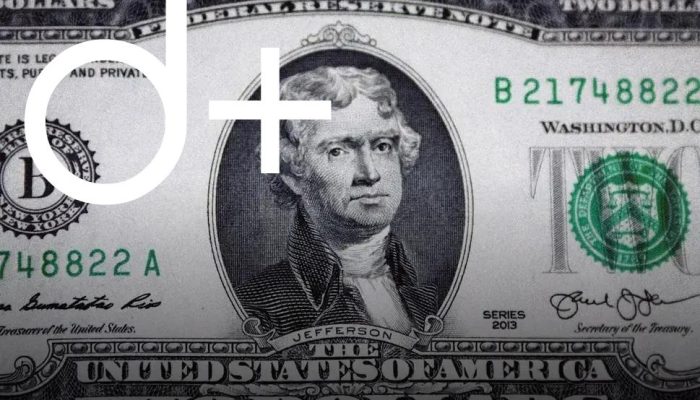Understanding the U.S. debt ceiling crisis is crucial for modern investors. This financial hurdle not only affects government operations but also has a cascading impact on the financial markets. As we delve into how this crisis unfolds, we’ll explore the immediate market reactions and long-term implications for investment portfolios. By the end of this discussion, you’ll have insights into strategies to safeguard your investments while navigating these turbulent times.
Understanding the Debt Ceiling
The debt ceiling is a pivotal aspect of the U.S. financial system that directly influences borrowing capacity and economic stability. It is the maximum amount that the government is authorized to borrow to meet its existing legal obligations. When this limit is reached, Congress must decide to either raise or suspend the ceiling to prevent the government from defaulting on its debts.
The debt ceiling is not about authorizing new spending but rather allowing the Treasury to fund obligations already legislated by Congress. As such, it plays a crucial role in maintaining the confidence of investors and financial markets in the U.S.
Understanding this mechanism requires recognizing its role in the broader fiscal policy and its impact on investors’ decision-making processes. When debates over the debt ceiling occur, they can lead to uncertainty and volatility in the market, which affects investment strategies and economic forecasting.
For investors, it is essential to comprehend how the debt ceiling might influence government bond yields, stock market performance, and currency values. Any delay or complications in elevating the ceiling can cause significant fluctuations and risks, urging the need for adaptive investment strategies.
Historical Context and Precedents

The U.S. debt ceiling, a legislative cap on the amount of national debt that can be incurred by the Treasury, has played a pivotal role in the country’s fiscal policy for over a century. Its origins can be traced back to the early 20th century, with the first debt limit established in 1917 through the Second Liberty Bond Act. This act was introduced to give the Treasury more flexibility in managing government expenditures during World War I while keeping Congress informed about national debt levels.
Over the decades, the debt ceiling has been adjusted numerous times. An understanding of historical precedents reveals a recurring pattern: political debates, temporary government shutdowns, and market agitation each time the debt ceiling nears its limit. However, these episodes have also showcased that despite the tensions, Congress has almost always reached an agreement to either raise or suspend the ceiling.
For investors, past debt ceiling crises serve as crucial learning points. In 2011, for instance, a prolonged stalemate led to the first-ever downgrade of the United States’ credit rating by Standard & Poor’s, which sent ripples across global markets. Although catastrophic default has always been averted, the mere prospect has often resulted in elevated market volatility and uncertainty.
Studying these historical episodes helps investors grasp the potential impact of present and future debt ceiling scenarios on their portfolios. Understanding precedents allows one to anticipate possible government actions and market reactions, equipping investors with the knowledge to navigate turbulent financial waters.
Immediate Market Reactions
As the U.S. nears its debt ceiling, investors can expect swift and significant reactions from the markets. The uncertainty surrounding whether the government will increase or suspend the debt limit can lead to fluctuations in stock prices, bond yields, and currency value. Traders and investors often display heightened volatility in response to any news related to debt ceiling negotiations or Treasury announcements.
Equity markets tend to be particularly sensitive, as companies with large government contracts may face direct financial impacts. In the short term, many investors might seek safer assets, such as Treasury bonds, leading to price increases and yield drops in those instruments if faith in government repayments remains intact.
Meanwhile, currency markets might see shifts, with the U.S. dollar potentially weakening against other major currencies. The prospect of the U.S. government being unable to meet its obligations can cause investor confidence to waver, affecting international exchanges as well.
Additionally, the risk of default or delayed payments may cause credit rating agencies to consider downgrading U.S. debt ratings, which could further exacerbate market turmoil. Investors should remain vigilant and prepared for sudden changes in market dynamics during this period.
Long-term Implications for Portfolios

The debt ceiling crisis affects investors by influencing the long-term strategies of their portfolios. When the government approaches its debt limit, it can lead to uncertainty in the bond and stock markets. This situation often causes interest rates to fluctuate, which directly impacts bonds. Long-term bondholders may see more volatility, as the value of existing bonds can decrease if the government issues new debt at higher rates.
Moreover, stock markets can be volatile during these periods. Investors tend to shy away from riskier assets, seeking safety in more stable investments. This shift can alter the composition of investment portfolios over time. In the face of a debt ceiling standoff, investors may need to revisit their allocation strategies to possibly include more defensive stocks or other assets that typically perform better in uncertain economic climates.
Additionally, the credit rating of the U.S. government may be affected by a prolonged debt ceiling debate, which could have long-term repercussions on the market’s confidence in government-backed securities. A downgrade in the credit rating could lead to rising borrowing costs, which impacts corporate debt markets too. Investors must consider the potential for such outcomes and adjust their risk exposure accordingly.
The downstream effects of these adjustments might lead investors to diversify globally, exploring international bonds and stocks to mitigate domestic risks. In essence, the debt ceiling crisis highlights the need for vigilance in portfolio management and careful consideration of both domestic and international market trends to safeguard long-term investments against potential upheavals.
Strategies to Mitigate Risks
The U.S. debt ceiling crisis poses significant risks for investors. To effectively mitigate these risks, diversification is a pivotal strategy. By spreading investments across various asset classes, such as stocks, bonds, and real estate, investors can reduce the impact of potential downturns in a specific market sector.
Additionally, consider increasing cash reserves. Holding a portion of your portfolio in liquid assets allows for greater flexibility during market volatility. This can provide a buffer against sudden financial needs or opportunities that may arise in uncertain times.
Investors should also focus on regularly rebalancing their portfolios. This involves adjusting the proportions of different assets to maintain the desired risk level, ensuring that the portfolio stays aligned with risk tolerance and investment goals amidst changing market conditions.
Furthermore, staying informed about economic policies and potential government actions is crucial. Awareness of policy changes related to the debt ceiling can aid in making timely and informed investment decisions, minimizing the risk of being caught off guard by sudden market shifts.







![BANNER 1 - HOME [QUADRADO]](https://dailyfindinvestment.com/wp-content/uploads/2025/01/BANNER-300-X-300.gif)
